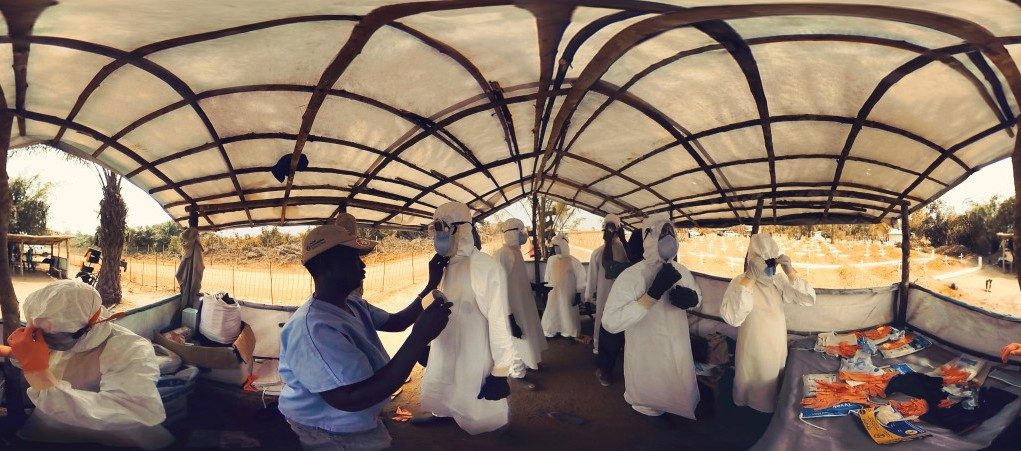To help raise awareness and show the impact of Ebola in that area, the United Nations and Vice Media teamed up with a virtual reality production company, VRSE, to tell the story of one survivor using 360 degree immersive photography. The results are remarkably powerful.
In December 2013, an outbreak of Ebola hit West Africa when a 2 year old boy fell ill with the devastating illness. Two days later, he had died after battling severe fever and vomiting. Since then, the deadly disease spread throughout 36 countries, killing over 10,000 people according to the Center for Disease Control and Prevention. It is the largest Ebola epidemic in history.
The film, called ‘Waves of Grace,’ starts on the beach with a woman walking along the sand as waves from the ocean peacefully roll up on the shore. The woman’s name is Decontee Davis, she is one of the lucky few to have survived the disease; and as a result, gained immunity. She begins to pray. “Dear Lord. Thank you for your healing grace,” she says. “Heal this land. Close these deep wounds.”
I had the opportunity to try ‘Waves of Grace’ at the 2015 Summer VRLA Expo a couple days before the official release. For me, beginning the story with a prayer initiated a strong emotional connection with the character / subject matter right away. As the next scene opens up, I found myself in a colorful market filled with tables and tables of food.
Soon, we transition to a school with dozens of eager students. Here, the director positions the camera amidst the children. I could see several of them glancing curiously into the lenses as their teacher conducted the lesson. The sense of depth was truly captivating, which paired well with the strategic placement of the camera. The technique instilled great empathy and intimacy, in a way unique to immersive cinema.
The scene then shifts to medical workers putting on protective suits. In the background, what looked like hundreds of graves remains. The individuals fade in and out, ghostlike, as I stare at the white crosses marking each grave. I could sense the presence of death while inside virtual reality. Knowing that real people laid in each of the graves, induced a great feeling of empathy for all those affected by the sudden outbreak of the disease.
That same emotion rose in me once again when I’m shown workers burring a body in a fresh grave later in the film. Watching them lay to rest someone who just died profoundly moved me. Everywhere I looked, there were dead bodies, buried. It was overwhelmingly powerful.
Other scenes that provoked strong emotions included being inside a hospital with sick child on a bed. Decontee David sat nearby, comforting the kid. As she continues to narrate, the scene cuts to a play area where several children joyfully kick a soccer ball around. The story unfolds from sickness to recovery, to mourning, and finally to perseverance with ease. Despite a few stitching errors, VRSE’s ability to tell great narratives cuts through the film, putting the user’s face to face with the struggle currently being felt in Liberia.
Decontee David is but one of thousands of stories out there, but her survival is so much more impactful when experienced in VR. Because of the compelling nature of ‘Waves of Grace,’ the United Nations is using the story to induce empathy at events. It is an effective use of the medium as when viewers are immersed they are brought so much closer to the horrors of the epidemic.
The struggle against Ebola is far from over. The battle still continues and those involved still need additional assistance. Because of the influential nature of the film, ‘Waves of Grace’ is sure to cause some powerful reactions, hopefully leading towards increased support.
Those interested seeing the film can watch it from afar in the video embedded below. To get the full sense of the experience though, we recommend watching in a VR headset like the Gear VR.
It can be viewed on VRSE’s Android and iOS apps as well.
For more information about VRSE’s other VR projects, take a look at their website.










